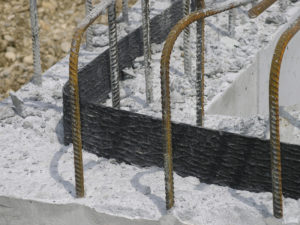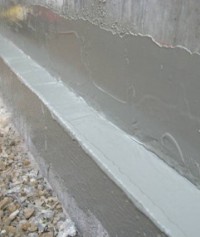Waterproofing Systems
How To Waterproof A Construction Joint
How to waterproof a construction joint. Firstly, lets define the term; Construction Joint.
Typically this refers to one form or direction of construction stopping and another starting and between them there is a joint.
In below ground structures all construction joints will be potential weak points for the passage of ground water ingress if sufficient ground water pressure comes to bear on the external face of the structure.
Such joints can be new construction against old or new build changes in direction. New structures in particular can be prone to subsequent movement and when this occurs, joints can become weakened allowing for ground water ingress.
The nature of the structure and its intended use also has a bearing on the type of construction joint detailing.
Being aware of construction joint detailing and giving thought to preventing the passage of ground water is critical and is referenced in BS8102: 2009; The code of practice for the protection of below ground structures against water from the ground.
How to waterproof a construction joint will be determined by several factors:
- Ground conditions to take into account the type of soil is free draining or likely to lead to perched water tables and if ground contaminants are present. This goes towards the risk associated to the job for ground water ingress.
- The nature of construction materials being used and the practicality of applying waterproofing materials.
- The construction methods.
- The consequence of failure.
These criteria will be part of the decision making process for the type and nature of construction joint waterproofing materials to use and even if a combination of material types would be a benefit. For instance, if a high water table were anticipated you would be advised to apply construction joint waterbars or waterstops within the joints along with perhaps a fillet detail product on the external side where the change in direction occurs. This is providing two ground water barrier details before any form of waterproofing system is applied.
There then comes the practical side to applying construction joint waterproofing products. Does the site offer plenty of working space or is it restricted. Is the site or joints to be treated exposed to the elements meaning that if a waterbar was applied would the expansion process start on coming into contact with rain resulting in it de-bonding. Has the construction process gone along too far to include construction joint waterbars meaning that perhaps grouts or slurries have to be applied on the the internal side?
The most commonly used for of construction joint waterproofing is the installation of a Waterbar also called a Waterstop bar.
The majority of water bars are made from a combination of Bentonite and a synthetic rubber or a Polymer based material. If you took a small piece of these materiala and left it dunked it into a cup of water you can observe its gradual expansion in size over the course of a few days. The volume of expansion varies between brands but most commonly, as much as 500% increase in its volume.
The size of waterbars varies also ranging from 2mm x 20mm to 25mm x 20mm with variables in between. What should you use? Again, this is determined by the level of risk associated with ground conditions. The greater the threat of ground water ingress the larger the size.
Waterstop bars can be fixed into place in four different and standard ways. Firstly you can use simple nails to tack them into place. You can use track rails and you can use fast bonding and waterproof MS Polymer Hybrid adhesive sealant. For our part, we recommend that Waterstop Waterbars are bonded into place using a swell mastic bonding adhesive which also has a swell capacity on coming into contact with water. Such as Premcrete WSM
To apply you would brush the surface down to remove any dust or building debris. You would gun a bead of mastic to around a 10mm bead and place the Hydrophilic waterbar on the top of the mastic. Ideally, you would protect this installation from rain fall to prevent a premature expansion and de-bonding.
To finish, there are a number of brands and products that can be used to waterproof a construction joint. Ranging from hydrophilic waterbars, to bruashable grouts, injectable resins, trowled and pumped fillets and even steel waterbar plates.
Most definitely, in the instance of below ground structures, you should waterproof all construction joints. What you used is determined by level of risk from ground conditions, the site conditions for the products application to ensure 100% workmanship standards and selecting the right product or products that are fit for the project and not based on simply ticking a box and cost because once done, there is no going back and failure can result in highly expensive remedial repairs.




